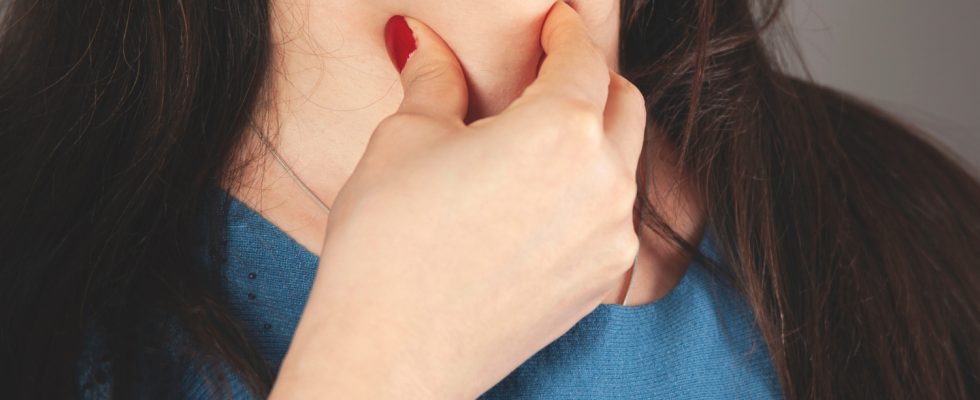Loss of voice is often a common symptom, when you have shouted too much or because of a virus. What are the other (more serious) causes? Covid-19? What to do ? Answers and advice with our general practitioner.
Loss of voice is one of the disorders affecting the speech apparatus. We are also talking aboutaphonia leading to popular expression “to be voiceless” when we no longer have a voice. Which is different from dysphonia which “represents a disorder affecting vocal abilities, without aphoniamanifested by a hoarseness, a hoarse, deep voice“, explains Dr Patrick Aubé, general practitioner.
What are the symptoms ?
“If the voice is extinguished without difficulty breathing, it is a common extinction of voice. If the disorder is accompanied by difficulty breathing and difficulty pronouncing vowels, it is epiglottitis.“, explains the doctor.
Because of Covid-19?
The Covid-19 virus affects the ENT tract and can therefore affect the vocal cords. However, rather than aphonia, it is dysphonia which has been confirmed by study as a symptom of Covid-19. In October 2023, a analysis of five databases bringing together nearly 21 articles on the subject, including 13,948 patients, showed that a quarter of patients with Covid-19, especially women, have suffered from voice disorders during the infectionand approximately 70% of these dysphonic patients continued to experience lasting vocal aftereffects, On the English application ZOE Study, thousands of Britons share their Covid symptoms. In 2021, the site confirmed that people using the app had reported changes in their voice. They mainly complained about having a hoarser voice. This symptom mainly affected adults and lasted two to three days most often, sometimes up to one week in adults (less in children).
What are the causes of voice loss?
“Aphonia is usually due to temporary inflammation of the larynx where the vocal cords are stretched.The most common cause remains vocal forcing: a excessive demand on the voice which leads to benign lesions of the vocal cords. But there are many other reasons for lane extinction:
- a cold,
- inflammation of the larynx
- a viral infection of the pharynx or tonsils
- there presence of polyps or benign mucous cysts,
- an allergy to pollen
- exposure to swimming pool disinfection products,
- smoking
- surgical trauma.
It can also be of psychiatric origin, especially when it is brutal and follows psychological trauma. It also happens that we do not determine the cause, we then speak of idiopathic aphonia, that is to say unidentified.
How long does loss of voice last?
A harsh loss of voice rarely more than 3 days. You must therefore be patient and above all put your voice to rest. “Beyond a week, these symptoms should lead to a consultation with the attending physician or ENT specialist who will perform a laryngoscopy, an examination allowing visualization of the vocal cords and the larynx. considers Dr. Patrick Aubé.
What can you do to find your voice when you are voiceless?
“For aphonia linked to vocal forcing, the first thing to do is to talk as little as possible but normally, whispering tires the vocal cords” enlightens the doctor who also recommends stopping smoking. For extinction of voice of inflammatory or infectious origin, the prescription of local anti-inflammatories by cortisone spray can be stated briefly. There are also natural solutions to treat voice extinction. Here is what Dr. Patrick Aubé advises.
- A propolis mouth sprayone spray 3 times a day.
- a inhalation of essential oils : fine lavender, tea tree, peppermint to calm inflammation and hydrate the vocal cords = 1 drop of each in a bowl of hot water or an inhaler 3 times a day.
- in adults only, gargles : 1 tablespoon of lukewarm water + 1 tablespoon of Calendula officinalis solution + 2 drops of peppermint essential oil. Gargle and spit without swallowing, 3 times a day.
- in homeopathy : associate Arnica 5CH and Arum triphyllum 5CH, 5 granules of each every two hours then space out if improvement.
Thanks to Dr Patrick Aubé, general practitioner and expert in phytotherapy and author of the book “Les tisanes qui soignent” published by Leduc.s.
